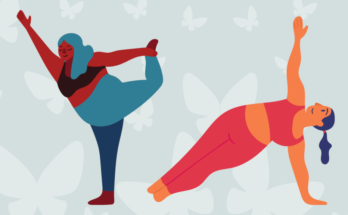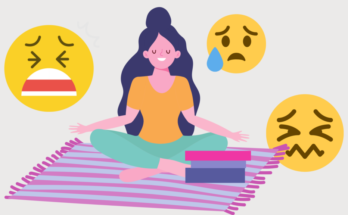✅ Fact Checked
🧘 If you only got 30 seconds:
You’ve probably heard that Savasana or Corpse pose is one of the most challenging yoga poses. Many yogis can balance on their heads, twist in pretzels, and get into splits but fail to relax when it comes to lying still on the ground.
Read on to learn:
- the main purpose of Savasana
- how to practice and get out of the corpse pose the right way
- the risks of practicing Savasana
- the difference between Savasana, meditation, and yoga Nidra
1/12 What is the Savasana position?
Savasana (sometimes also referred to as Mrtasana) is a relaxation yoga pose. Visually, Savasana imitates the position of a corpse.
In Savasana, you lie flat on your back with your eyes closed and your body still and motionless.
The primary purpose of Savasana is to still the mind and relax your body while staying completely conscious.
My Favorite Yoga Gear Essentials
I’m picky about my yoga gear
I’m ready to blow some cash on high-quality ethically-made items that are eco-friendly and built to last 🌱 It supports my efforts for sustainable yoga practice and lifestyle.
2/12 Why is it called corpse pose in yoga?
Corpse is a translation of the Sanskrit word Sava or Mrta while asana means pose.
This Savasana or Mrtasana is often referred to in Western yoga as Corpse pose.
3/12 What are the benefits of corpse pose?
B.K.S. Iyengar calls Savasana “the best antidote for the stresses of modern civilisation.”
Indeed, stress reduction and relaxation are the main benefits of practicing corpse pose regularly. But apart from its soothing properties, corpse pose also offers a myriad of other additional benefits such as:
- muscle recovery after a yoga practice
- reduced blood pressure
- improved digestion and immune system boost
- increased sleep quality
- enhanced emotional well-being and feeling of happiness.

Yoga Deals & Discount Codes
Brands I use and love
Here’s a collection of companies and brands I’ve tried and loved ❤️ I’ve grouped them into 4 categories. The brands in each category are sorted alphabetically and include a: short about/best for info, link to my full review, and a discount code (if available).
4/12 Why is Savasana the hardest pose?
B.K.S. Iyengar, in his book Light on Yoga called Savasana “apparently easy posture” but “one of the most difficult to master.”
That is because while it doesn’t take much effort to lie still, it is surprisingly hard to make your mind and body relax by mere power of will.
If relaxing and releasing tension were so easy, the human race would most likely not suffer from chronic stress, anxiety, and insomnia.
5/12 Why does yoga end with Savasana?
Many yoga classes close with Savasana for several reasons:
- Restorative. Corpse pose allows the body and muscles to relax and regenerate after a physical practice.
- Meditative. Corpse pose at the end of the class is your chance to dig deeper into your subconscious and make room for healing. It’s also an opportunity to practice pratyahara – disengaging from the environment around you and work toward reaching the higher consciousness or enlightenment.
- Reset. During the final relaxation, your nervous system has a chance to reset and soothe.
That said, it’s not uncommon to open a yoga class with Savasana or practice it in the middle of your yoga session to reset and restore.

6/12 How do you do Corpse pose?
- Lie down on your back with your legs and arms extended, imitating the corpse.
- Keep your palms facing upward.
- Keep your hands and feet as wide as you find comfortable.
- Close your eyes and start breathing smoothly and slowly.
- Feel how your body is touching the mat and allow yourself to melt into the ground.
- Start scanning your body from head to toes, noticing tension, and letting it go. Notice the little areas in your body that unconsciously carry a lot of tension, such as the jaw, forehead, and throat.
7/12 How long should you do the corpse pose?
B.K.S. Iyengar in Light on Yoga advises staying in Savasana for at least 15-20 minutes. You can set the alarm if you’re practicing at home so you won’t be forced to distract yourself checking the time.
That said, life is hectic, and it’s not always possible to cut out 15 minutes of your day for the Corpse pose. Even one or two minutes of mindful Savasana a day will bring benefits.
So whenever you’re in a hurry, remember that a short Savasana is better than none.
8/12 How do you get out of Savasana?
When you’re ready to exit Savasana, start to slowly wiggle your toes and fingers. You can bend your knees one at a time.
To get out of Savasana, roll on one side and slowly lift yourself up into a seated position. Move slowly and steadily to avoid dizziness.
Yoga teachers often cue their students to roll on the right side before lifting themselves up rather than the left side. Here’s why: In yoga, it’s believed that we have energy channels in our nostrils. The right one is the right nostril is called pingala, and the left one ida. When we lift from the right side, the breath gets into our left nostril that is considered to generate coolness, promote relaxation and peace.
Instead of jumping out of Savasana and getting about your day, when you exit the final pose, try to bring the feeling of calm that you’ve cultivated on the mat into your life.

9/12 What is the danger of the corpse pose?
Savasana is generally considered a safe pose for yogis of any level, with a few exceptions being:
- pregnant people
- people with osteopenia or osteoporosis.
Savasana is often not recommended for pregnant people because of the risk of the supine hypotensive syndrome (S.H.S.). S.H.S. can occur starting from the second trimester and happens when the uterus compresses the inferior vena cava, preventing blood from returning back to the heart.
As for the people with osteopenia or osteoporosis, there’s been a small research that showed that this group of people are especially susceptible to extreme spinal flexion and extension. While Savasana doesn’t seem like an extreme pose, it might feel very uncomfortable if you have a tight upper back, hips, and legs. In this case, Savasana can always be modified by placing a bolster under the knees or using a chair as a prop.
10/12 Can we sleep in savasana?
Beginner yogis often doze off in Savasana. However, the true purpose of the pose is a conscious release of mind and body tension.
By sleeping in Savasana, you’re missing its benefits such as stress relief and an increased sense of well-being.
11/12 Is yoga nidra same as Savasana?
No, yoga Nidra and Savasana are different concepts.
Savasana or Corpse pose is a yoga posture. It’s a position of our body we use to relax at the end of the class and reset our nervous system.
Yoga Nidra is a practice of deep relaxation that is performed in the position of a corpse Savasana. The point of yoga Nidra is to enter the deep subconscious through body scanning and visualization. Yoga Nidra allows you to experience a state between awakeness and sleep.
Though Savasana and yoga Nidra are different concepts, they are not mutually exclusive.
You don’t necessarily need to lie in Savasana to practice yoga Nidra. Still, you can experience a state of Nidra while being in Savasana.

12/12 What is the difference between savasana and meditation?
Savasana and meditation are different concepts despite having a lot in common.
In Savasana, we breathe smoothly and slowly but we don’t worry about focusing on the breath or our thoughts. They just are! The primary purpose of Savasana is rest and relaxation.
The intention of meditation is to increase awareness and practice “letting go.” Meditation often uses an anchor to focus your attention on, whether it’s a breath or an object. During the meditation practice, you watch your thoughts without evaluating them. And whenever your mind drifts off, you come back to your anchor.
Should you meditate before or after Savasana?
You can meditate before or after Savasana. It totally depends on your preferences, state of mind, how much time you have, etc.
If you find your heart is pounding after your yoga practice and you feel agitated, starting with Savasana to let your body relax and soothe is likely to feel more natural than diving straight into meditation and mind work.
On the contrary, some people feel Savasana makes them drowsy, and they find it hard to maintain focus during the meditation practice afterward. In this case, start off with meditation and finish your yoga with Savasana for a final reset and relaxation.
You can also combine the two and meditate in Savasana if seated meditation is uncomfortable. Though keep in mind that it’s easier to get sleepy while meditating in the lying position.
Source link




